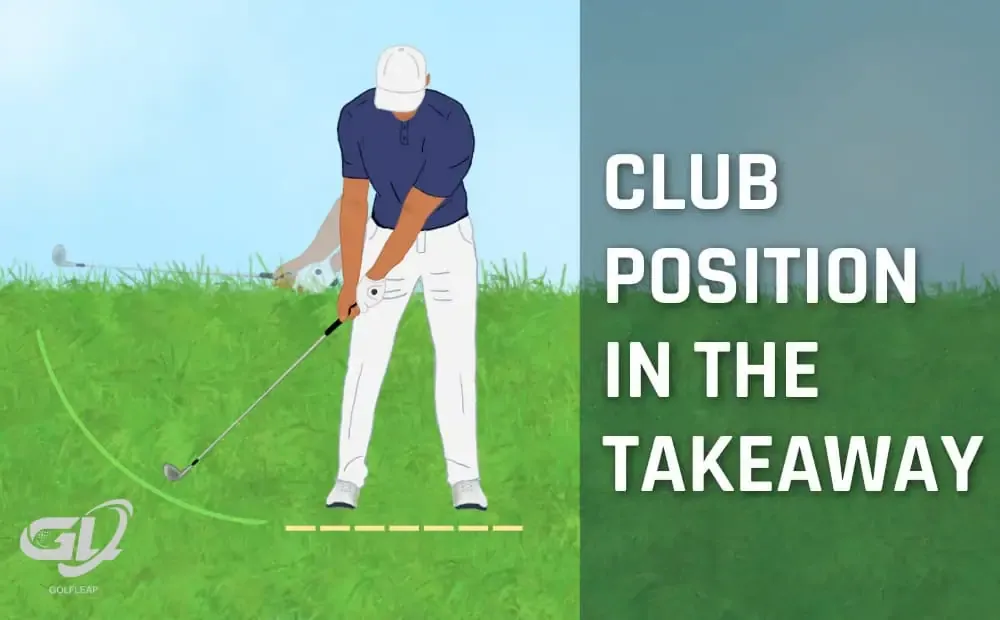
Better players can determine other golfer’s general skill level just by watching the first two-tenths of a second of their golf swing.
The takeaway, also known as the first half of your backswing, does so much to determine how accurate your shots are, how reliable your swing can produce results under pressure, and your ability to remain injury-free while golfing.
Our breakdown is going to explain exactly where to position the golf club during the takeaway as well as the reasons why cleaning up your takeaway is a simple step toward playing much better golf!
Perfect Takeaway Position Explained
The goal of an ideal backswing takeaway is to pre-set your club into a position that’s comfortable on your body, easily repeatable, and creates greater consistency for the rest of your backswing and downswing.
We love to break the golf swing down into easy little points of focus, but we particularly feel that the takeaway has three main club positions most great golfers try to master:
- First Few Inches on the Target Line
- Hinge Wrist When Hands Pass the Trailing Leg
- Club Head Hides the Hands
1. First Few Inches on the Target Line
To master the very beginning stage of the takeaway, you’ll need to understand what your Target Line is.
Picture the Target Line as an imaginary line that passes between the center of your club face, your golf ball, and where you’re aiming for your target.
An optimal and comfortable initial motion for the takeaway is the clubhead moving directly backwards for the first few inches and remaining on top of your Target Line.
Things to Avoid in Step 1
Taking the golf club outside the target line and away from your body (a problem of your author and Tommy Fleetwood) during your takeaway forces your arms to reroute the club on the downswing since you can’t hit the ball solidly while the club is away from your body.
This is hard on your golfer muscles and often leads to injury and frustration from unpredictable shot shapes.
Taking the golf club inside the target line (a problem of 95% of amateur golfers) and toward your body during the takeaway fools golfers into believing they’re generating more power, when in reality, the golfer is just hindering their flexibility through impact!
Dragging the club inside the target line does load a ton of energy into the trailing hip, but since the arms are way behind the body from your poor takeaway, they cannot reach the golf ball with this energy in an efficient fashion.
2. Hinge Wrist When Hands Pass the Trailing Leg
After focusing on the club head and ensuring you’re doing a good job keeping it on your target line, shift your attention to your hands.
Once your hands begin to pass your trailing leg moments after Step 1, your trailing wrist should begin to hinge upward (like you’re pulling up on a fishing rod) while your leading wrist remains straight.
Hinging your trailing wrist upward will naturally bring the club toward your body and inside the target line. This move helps a golfer continue to generate efficient energy during their backswing and avoid shifting their weight away from the golf ball while keeping the club head traveling on its intended swing plane for naturally straighter and more consistent results!
Helpful Hint About Step 2
We’ve found rotating our trailing arm into a “giving blood position” followed by rotating our hand and wrist back onto the golf club when creating our golf grip helps us create the appropriate amount of wrist hinge needed in Step 2 comfortably.
We’ve also discovered feeling pressure in our leading hand’s pinkie finger and pushing downward with this hand during the takeaway helps with Step 2.
3. Club Head Hiding the Hands
After perfecting Step 1 and Step 2 of an ideal takeaway, your final step to complete the takeaway is having the clubhead hide your hands once it reaches parallel with the ground. This is also the ending position of the takeaway.
Having the golf club “hide your hands” is a checkpoint used by many of the best golfers in the world (including Tommy Fleetwood and Adam Scott), and ensures to players and coaches that their swing is working in the most efficient and energy generating way by not requiring any unnecessary movement from your body.
While there’s some room for variation regarding the angle of your clubface from this “Hiding the Hands” position, most elite-level golf coaches agree that your spine angle and clubface angle should roughly match!
You’ll likely need a mirror or camera to film your golf swing from the perspective that’s directly behind you (also known as the “Down-the-Line” angle to view a swing in the golfing world) to confirm your club position!
Conclusion
We hope you now see why breaking down the takeaway into a few separate steps can help you build more reliability and consistency in your swing with a better position for the golf club.
The position of your golf club during your takeaway has a strong influence on the rest of your backswing and ultimately how you contact the ball, meaning you should focus on the takeaway heavily when trying to gain more control over your golf swing!
We’ve also written a quick summary of our three favorite golf swing takeaway drills that focus on explaining simple ways you can drill a proper takeaway and use common training items to help you accomplish this task the quickest!

